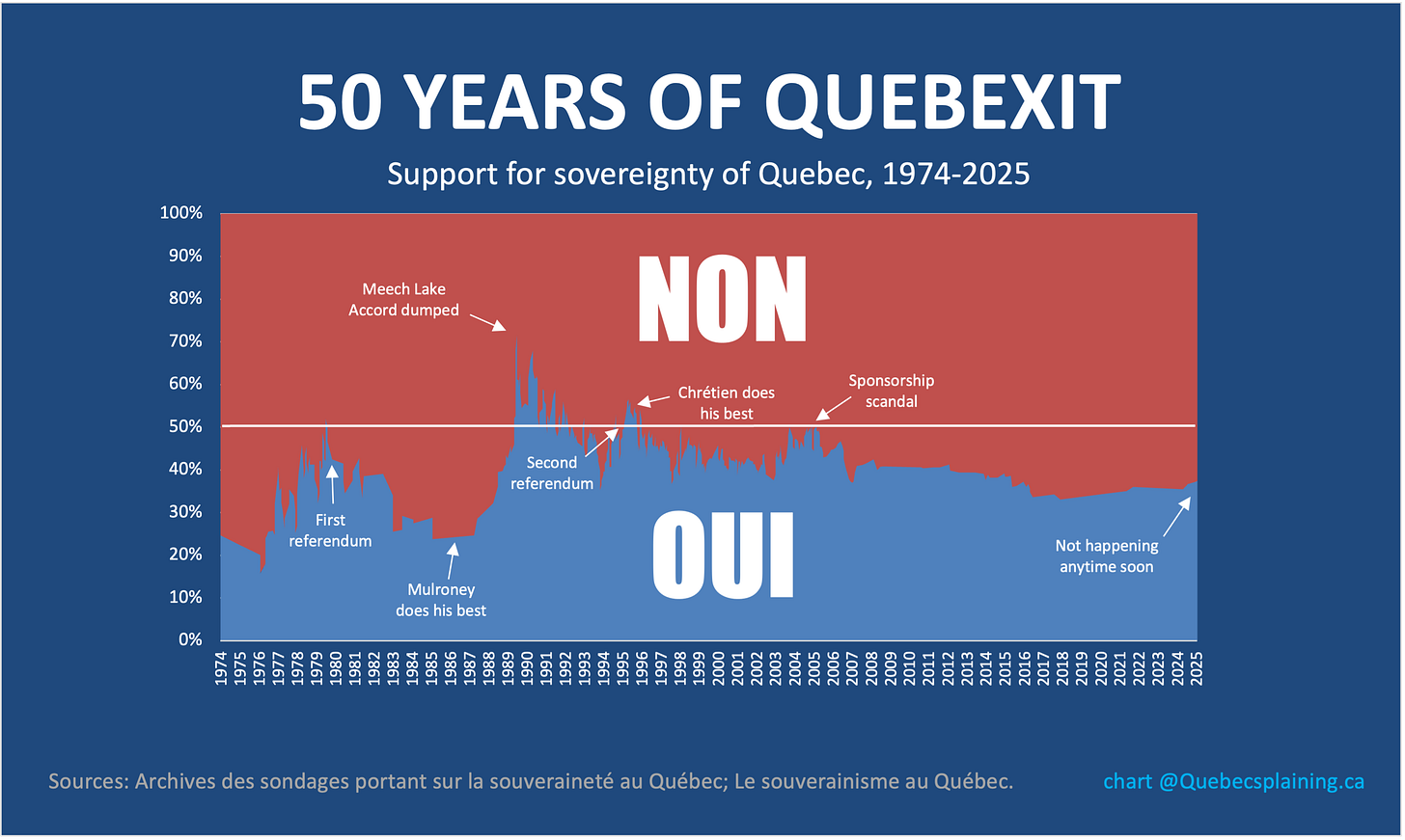Fifty years of Quebexit
This is what asking Quebecers 900 times if they want to “Quebexit” looks like when put into a chart.
Keep reading with a 7-day free trial
Subscribe to Quebecsplaining to keep reading this post and get 7 days of free access to the full post archives.



